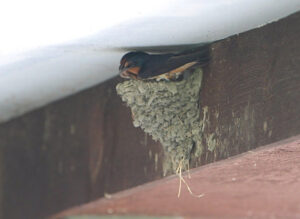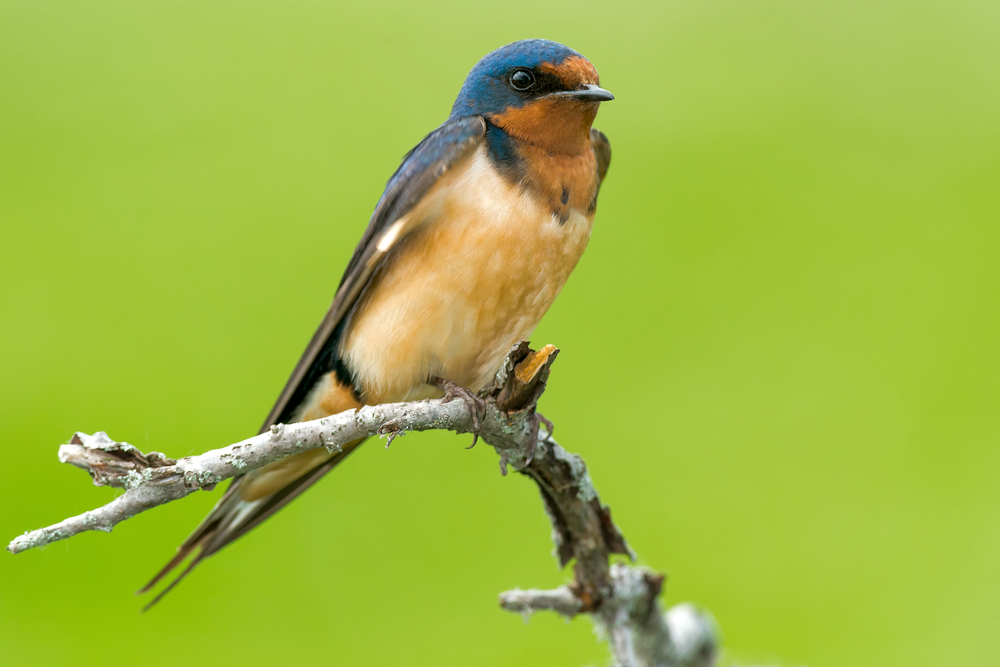Barn Swallow, Hirundo rustica
Bill Rowe
A true citizen of the world, the elegant Barn Swallow can be seen on six continents, in the Northern Hemisphere in summer and the Southern in winter. You’ll find it in literature about as far back as literature goes. “Hedge-crickets sing; and now with treble soft/The red-breast whistles from a garden croft/And gathering swallows twitter in the skies.” Those are Barn Swallows (the common swallow of England), and that’s Keats, reminding us that autumn has its own distinctive sounds—a good lesson for birders, by the way. The English term “swallow-tailed,” which naturalists have applied to butterflies, kites, gulls, and goodness knows what else, refers to this species, as our only swallow with the long tail streamers. The bird’s name, too, conjures up images of the summer countryside in America and Eurasia, where they nest in just about every barn and dart over every field. But what did they do before people built homes and barns? It seems they nested in caves or on rock faces, as they occasionally still do, but over the centuries they have almost completely converted to human structures, where they build their nests against a wall or on a support of some kind, with an overhang (like eaves) for protection. By bringing back dabs of mud from wet places over and over, they gradually build up the nest with a base first, then walls, then a lining of grasses, all of which may take one to two weeks. Once the eggs are laid and the young are hatched and fledged, the adults may go through it all again and raise a second brood, as happens with many birds. Come fall, they gather in flocks—sometimes huge ones, up to five or six figures—before starting their annual migration to Middle and South America.
IDENTIFICATION: Our six kinds of swallows can be tough to separate as they zip around in the sky, but Barn Swallows will usually stand out with their long forked tail, shiny dark-blue back, and colorful underparts, all rusty-orange with a dark red throat. Females and juvenile birds have shorter tails and paler bellies but are still distinctive, and they have one extra mark that helps: the white tail spots that are shown by Barn Swallows of all ages.
ST. LOUIS STATUS: Common from mid-spring through mid-fall, with occasional birds lingering into November but almost never into winter.
Learn more and listen to the songs and calls of Barn Swallows here.


Adult in flight
Adults on nest
Photo Credit: Al Smith




